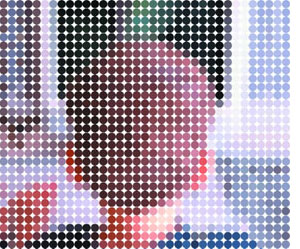 |

I suppose my work on this book really started in 1994, when Newsweek hired me to be its first “multimedia news reporter.” At the time, I was fascinated with the new technology era that was just popping up, and hopeful about what computers could do for story-telling in the media. Over the next four years, I helped produce some of journalism’s first efforts at what we called interactive news stories (on CD-Roms), wrote an online column, managed Internet discussions with readers, and occasionally spoke at media forums about technology’s possibilities. This experience also treated me to a close look at the high technology industry. Before long, I was gnawed by discouraging feelings about my new field—a sense that, as Gertrude Stein famously said about Oakland, “there is no there there.” My fears were partly confirmed at the turn of the century by high tech’s great crash (a correction, I should note, that ought to eventually bounce the technology industry back to its rightful place: as just another business, which struggles onward through the same ups and downs that every industry must face.)
As I grew discouraged by more and more of the materials I saw at technology conferences, I began worrying about what we, who were creating all these inventions, might be doing to our consumers—and to the many professions that were now having to adopt digital technology as their standard production system. Is this innovation ushering in the era of great progress we had been promised, or is it causing unfathomed social problems? Whatever the answers are, I thought they would be most readily apparent among children, who embrace technology with great enthusiasm, and who are exceptionally impressionable.
As I was mulling over this idea, I fell into conversation one afternoon with a very old friend—the mother, in fact, of my best friend, who had watched more than a dozen children and grandchildren go through school. She had recently returned from a tour of her children’s alma mater, one of San Francisco’s finest private schools. The tour was arranged largely to show parents and school board members the wonderful ways its students were already using their new desktop computers. “I don’t know,” my friend told me, “maybe I’m just out of it now. But to me those children looked like zombies. Just a bunch of little zombies.”
For days, I couldn’t get that image out of my head.
This was 1995, when press accounts of computers in classrooms were just beginning. But most were already overwhelmingly enthusiastic about the concept. (Actually, this moment of enthusiasm was something of a déjà vu: As readers of this book will discover, the notion of classroom computing enjoyed an earlier period of intense excitement, in the early 1980s, before crashing to reality by the middle of the decade.) Some weeks after my conversation about the private school scene, I noticed a small article in the paper about a new federal campaign to put more computers into classrooms. Buried at the bottom of this account were a few brief reservations about the endeavor, voiced by none other than the editor of the Harvard Education Letter. I promptly picked up the phone, which led to an eye-opening interview about the poor quality of the research claiming that computers improve academic achievement. Soon thereafter I dropped by a few classes in San Francisco, specifically in public schools where technology is given special emphasis. The emptiness of what I saw, and the insightful comments from teachers who understood the sham being visited upon them, stunned me. I kept up the school visits and the phone calls, and soon knew that I had a story.
The article that resulted was published as a cover story in the July, 1997, The Atlantic Monthly, under the title “The Computer Delusion.” Response to the story was surprisingly loud, enthusiastic, and profound—the kind of reaction journalists dream about. (Part of that response was the year’s National Magazine Award for reporting in the public interest.) In the following months, I was interviewed constantly and invited to speak on the topic at various education and technology conferences. I also got offers from publishers to turn the article into a book. Knowing that stretching a successfully told magazine article into a full-length book often spells disaster, I initially demurred. But as time wore on, I realized there really was far more to this story than I had initially reported. My renewed curiosity led to a book contract in 1998, and now—six years later—a far more complex story: about what the modern world’s impatience has done to the art of learning, and the heroes who are daring to take an alternative path.
Image detail from the cover of The Flickering
Mind. Art by Jamie Keenan.
|
 |
